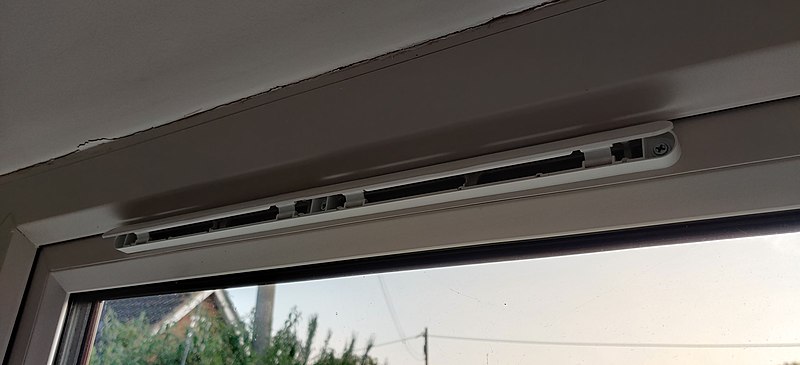Residential buildings have become better sealed than ever before in recent years due to a push to offer thermal comfort and boost energy efficiency. On the other hand, internal contaminants can significantly influence interior air quality as dwellings become more airtight. If contaminants cannot escape, the health of individuals who live in a house may be jeopardized. Background ventilation is required to maintain a healthy and comfortable indoor atmosphere for a home’s inhabitants. As a result, homeowners install window trickle vents to alleviate these issues.
What exactly are trickle ventilators?
Trickling ventilators (or window trickle vents) offer efficient background ventilation for a house, allowing for unobtrusive and regulated whole-room airflow contributing to a healthy natural surroundings. They are positioned at the top area of windows and are readily adjustable using cables, rods, or simply by hand.
What are window trickle vents used for?
Even while the window or door is closed, trickle vents provide a tiny amount of air. These vents are intended to avoid or reduce issues caused by inadequate ventilation, like condensation. Furthermore, they aid in removing stale air from the property, which is especially beneficial if you have any lingering odours in your house. Trickling vents also have a security benefit. If you want to ventilate your home while you’re away, you may use trickle vents to just let air in there without leaving windows open or unlocked or have to add extra window openers.
Can I fit trickle vents into my existing window?
If you have condensation issues in your property, you may always put trickle vents in the windows. Fitting a trickling vent into an existing window, on the other hand, may take some time and must be done by someone with experience putting trickle vents into windows. Window trickle vents are not mandatory; however, they can aid in the prevention of damp problems in the property. If you do not want to add them to your existing windows and need repair, you may replace them and start over with brand new sealed units that prevent heat transmission and condensation.
Do trickle vents work?
Window trickle vents are an excellent method to reduce condensation and keep the air in your house fresh. However, trickle vents do not provide thorough ventilation due to their tiny size – they are referred to as ”background ventilation” – therefore, if you want faster cooling, there are better choices. The simplest and most effective alternative to trickling vents is to open a window.
What is the importance of background ventilation?
Background ventilation is the passive movement of air into or out of buildings through vents. It is accomplished using a ‘small ventilation aperture designed to offer controlled ventilation across an entire structure. The flowing air lowers the threat posed by dangerous indoor air pollutants created within the residence. This contributes to a safe and comfy indoor atmosphere for a home’s residents. Trickle vents are excellent for this application. An excellent background vent is required if you want to offer a healthy and comfortable interior atmosphere for your households.

